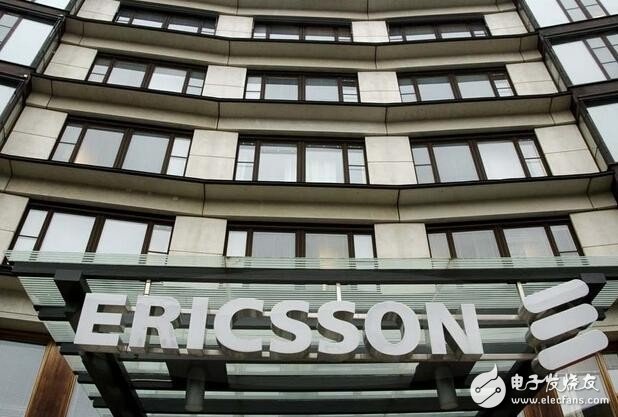At this year's MWC, the three forces of chip vendors, communications equipment vendors and operators officially blew the slogan from 4G to 5G. Before 5G commercialization, the ability of enterprises to control core technologies will determine the level of discourse power. Such competition is especially important for communication equipment vendors.
As a veteran communications equipment giant with more than 140 years of history, Ericsson's status in the 4G era has encountered the impact of Huawei and ZTE. But in the 5G research and development, Ericsson's performance is not inferior to any company. In just three months of this year, Ericsson has been active: first, with IBM, a total of silicon-based millimeter-wave phased array ICs, and then combined with South Korea's SK Telecom to complete the world's first intercontinental 5G network test. . . . . In particular, the company has frequently released large-scale moves from major operators around the world, and its heart is clearly comparable to the bright moon.

In fact, as early as 2012, Ericsson has started to invest in the research and development of 5G technology, the core of which is network slicing and 5G NR technology.
5G network slicing technologyWhen it comes to Ericsson's 5G technology, first of all, it needs to mention its 5G network slicing technology.
The term "5G network slicing" is no stranger to the industry. It is the most discussed technology in the 5G era and has been hailed as the ideal network architecture in the 5G era. Network slicing allows operators to segment multiple virtual end-to-end networks in a single hardware infrastructure. Each network slice is logically isolated from the device to the access network to the transport network to the core network, adapting to various types. Different feature requirements for the service.
In 2013, Ericsson successfully launched a new model of network slicing. It leverages network resource automation and dynamic business processes, combined with carrier software-defined network architecture framework (SDN) and cloud system solutions, to tailor the network, cloud and management to meet the individual needs of consumers and businesses. Improve the efficiency of carrier networks and IT resources.
In addition, Lei Feng.com has learned that Ericsson has also proposed some 5G network slicing use cases.
First, mobile broadband, with high-capacity, high-rate characteristics, smart antennas (including controllable antenna elements, spectrum and coordination between base stations) will help provide such services for 5G users;
Second, multimedia, by 2020, the number of video devices will reach 15 billion, and the development prospects are very broad. Such use cases require a certain amount of uplink and downlink network capacity, and the network needs to have ultra-high availability and high-speed mobility. The provisioning method will be more cost effective and resource efficient, so resource-intensive mode of operation will only be used when needed;
Third, machine type communication (MTC) can be divided into large-scale MTC and key MTC.
In September 2014, Ericsson and NTT docomo began to jointly develop dynamic network slicing technology. This technology made new progress in June last year. Both announced that they have successfully completed a joint proof of concept (PoC) for 5G core network dynamic network slicing technology. In this proof of concept, Ericsson developed the network slice life cycle and service management technology. The slice management function and network slicing are automatically created by the system according to the service requirements, thus ensuring the simultaneous delivery of a wide variety of services through multiple logical networks. This is the next step in the Ericsson 5G network end-to-end system. The demonstration also includes a virtual wireless access network implementation method that can be used to implement wireless interoperability for general 4G and 5G networks.
On the other hand, Ericsson has maintained close cooperation with global operators, especially South Korea and Germany, on joint network slicing technology.
In July 2015, Ericsson and South Korea's SK Telecom signed a 5G cooperation memorandum. The two sides jointly developed and deployed a network slicing technology optimized for 5G services. In the following three months, the two jointly conducted a 5G network slicing test for augmented reality and virtual reality. Business optimization, such as reality, large-scale Internet of Things, and enterprise solutions, created a dedicated network slice.
At the MWC conference in 2016, Ericsson also launched Deutsche Telekom and Korea SK Telecom announced that it will cooperate globally to develop breakthrough 5G technology for the joint network. In June of the same year, the three jointly deployed the world's first trans-continental 5G trial network. Ericsson is the only infrastructure provider for this cooperation. The three use network slicing, NFV (Network FuncTIon VirtualizaTIon), SDI (network function virtualization) 5G technology, such as software-defined technology architecture) and distributed cloud, deploys trial networks in Korea and Germany. The main goal is to promote advanced 5G use cases to the world by optimizing user roaming experience.
Subsequently, Ericsson further introduced 5G roaming joint network slicing technology, teamed up with SK Telecom and Deutsche Telekom, and jointly created and demonstrated the world's first intercontinental 5G trial network in July 2016. According to Lei Feng.com, in this demonstration, the network of two telecom operators has applied network slicing technology. It is worth noting that the application of this technology enables network connectivity between Germany and South Korea. On this basis, other operators' networks can use SK Telecom and Deutsche Telekom to create network slices.
In October 2016, the IMT-2020 (5G) promotion group officially ended the first phase of the 5G technology R&D test. Among them, network slicing and other technologies became one of the key test contents of the first phase. Ericsson is the main test of the technology. Manufacturer.
At the recently concluded 2017 MWC, Ericsson released the latest development of 5G joint network slicing: jointly develop and demonstrate 5G smart factory prototype jointly with China Mobile, demonstrating based on 5G interconnected factory standard PLC (Programmable Logic Controller) Connect to simulate assembly lines in a smart factory environment.
Shenzhen Esun Herb Co.,Ltd. , https://www.szyoutai-tech.com